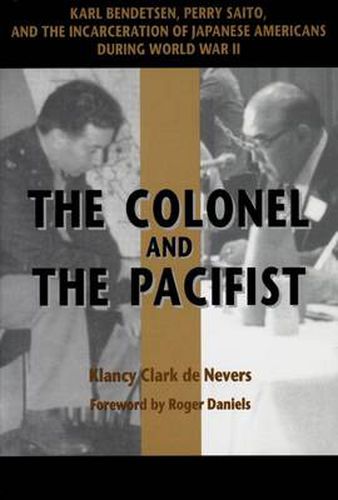Readings Newsletter
Become a Readings Member to make your shopping experience even easier.
Sign in or sign up for free!
You’re not far away from qualifying for FREE standard shipping within Australia
You’ve qualified for FREE standard shipping within Australia
The cart is loading…






Executive Order 9066. In February 1942, ten weeks after the Japanese attack on Pearl Harbor, President Franklin D. Roosevelt put his signature to a piece of paper that allowed the forced removal of Americans of Japanese ancestry from their West Coast homes, and their incarceration in makeshift camps. Those are the facts. But two faces emerge from behind these facts: Karl R. Bendetsen, the Army major who was promoted to full colonel and placed in charge of the evacuation after formulating the concept of ‘military necessity, ’ and who penned the order Roosevelt signed, and Perry H. Saito, a young college student, future Methodist minister, and former neighbor from Bendetsen’s hometown of Aberdeen, Washington who was incarcerated in Tule Lake Relocation Camp. The Colonel and the Pacifist tells the story of two men caught up in one of the most infamous episodes in American history. While they never met, Bendetsen and Saito’s lives touched tangentially–from their common hometown to their eventual testimony during the 1981 hearings of the Commission on the Wartime Relocation and Internment of Civilians. In weaving together these contrasting stories, Klancy Clark de Nevers not only exposes unknown or little known aspects of World War II history, she also explores larger issues of racism and war that resonate through the years and ring eerily familiar to our post-9/11 ears.
$9.00 standard shipping within Australia
FREE standard shipping within Australia for orders over $100.00
Express & International shipping calculated at checkout
Executive Order 9066. In February 1942, ten weeks after the Japanese attack on Pearl Harbor, President Franklin D. Roosevelt put his signature to a piece of paper that allowed the forced removal of Americans of Japanese ancestry from their West Coast homes, and their incarceration in makeshift camps. Those are the facts. But two faces emerge from behind these facts: Karl R. Bendetsen, the Army major who was promoted to full colonel and placed in charge of the evacuation after formulating the concept of ‘military necessity, ’ and who penned the order Roosevelt signed, and Perry H. Saito, a young college student, future Methodist minister, and former neighbor from Bendetsen’s hometown of Aberdeen, Washington who was incarcerated in Tule Lake Relocation Camp. The Colonel and the Pacifist tells the story of two men caught up in one of the most infamous episodes in American history. While they never met, Bendetsen and Saito’s lives touched tangentially–from their common hometown to their eventual testimony during the 1981 hearings of the Commission on the Wartime Relocation and Internment of Civilians. In weaving together these contrasting stories, Klancy Clark de Nevers not only exposes unknown or little known aspects of World War II history, she also explores larger issues of racism and war that resonate through the years and ring eerily familiar to our post-9/11 ears.